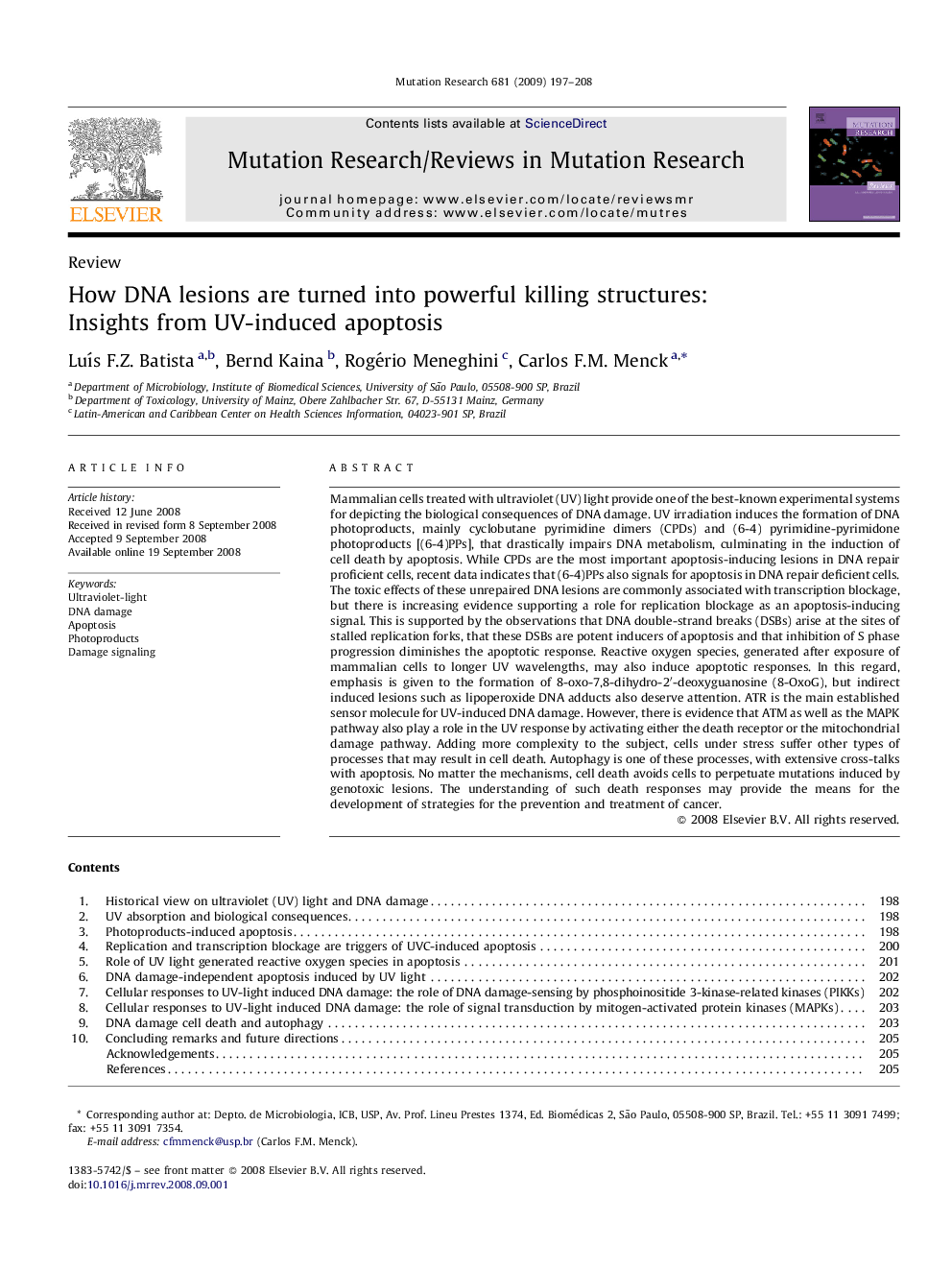| کد مقاله | کد نشریه | سال انتشار | مقاله انگلیسی | نسخه تمام متن |
|---|---|---|---|---|
| 2149709 | 1548760 | 2009 | 12 صفحه PDF | دانلود رایگان |

Mammalian cells treated with ultraviolet (UV) light provide one of the best-known experimental systems for depicting the biological consequences of DNA damage. UV irradiation induces the formation of DNA photoproducts, mainly cyclobutane pyrimidine dimers (CPDs) and (6-4) pyrimidine-pyrimidone photoproducts [(6-4)PPs], that drastically impairs DNA metabolism, culminating in the induction of cell death by apoptosis. While CPDs are the most important apoptosis-inducing lesions in DNA repair proficient cells, recent data indicates that (6-4)PPs also signals for apoptosis in DNA repair deficient cells. The toxic effects of these unrepaired DNA lesions are commonly associated with transcription blockage, but there is increasing evidence supporting a role for replication blockage as an apoptosis-inducing signal. This is supported by the observations that DNA double-strand breaks (DSBs) arise at the sites of stalled replication forks, that these DSBs are potent inducers of apoptosis and that inhibition of S phase progression diminishes the apoptotic response. Reactive oxygen species, generated after exposure of mammalian cells to longer UV wavelengths, may also induce apoptotic responses. In this regard, emphasis is given to the formation of 8-oxo-7,8-dihydro-2′-deoxyguanosine (8-OxoG), but indirect induced lesions such as lipoperoxide DNA adducts also deserve attention. ATR is the main established sensor molecule for UV-induced DNA damage. However, there is evidence that ATM as well as the MAPK pathway also play a role in the UV response by activating either the death receptor or the mitochondrial damage pathway. Adding more complexity to the subject, cells under stress suffer other types of processes that may result in cell death. Autophagy is one of these processes, with extensive cross-talks with apoptosis. No matter the mechanisms, cell death avoids cells to perpetuate mutations induced by genotoxic lesions. The understanding of such death responses may provide the means for the development of strategies for the prevention and treatment of cancer.
Journal: Mutation Research/Reviews in Mutation Research - Volume 681, Issues 2–3, March–June 2009, Pages 197–208